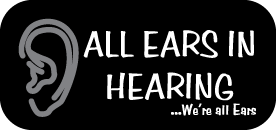FM Systems & Assistive Listening Devices
Some listening situations are more difficult than others due to background noise or distance. FM Systems and other Assistive Listening Devices (ALDs), when used in conjunction with or without a hearing aid can help improve speech understanding in challenging situations such as meetings, listening to lectures or seminars, restaurants, using the telephone, watching the television or traveling in the car. For those who have difficulty using mobile phones, some FM system models are available with blue tooth technology, enabling cordless, hands free operation of mobile phones.
ALDs are ideal for those who have difficulty using hearing aids and are perfect for use in retirement villages or nursing homes for staff or family members communicating with residents.
FM SYSTEMS
Even with the most sophisticated hearing instruments, most hearing impaired people have difficulty hearing in certain situations such as restaurants, meetings, watching TV or using the phone. Background noise, distance, acoustics or lack of visual contact, makes it difficult to hear the speech signal clearly. The best way to overcome these everyday challenges is to complement hearing instruments with wireless FM technology.
A direct wireless link between speaker and hearing impaired listener, guarantees optimum speech understanding, even in the most difficult listening situations. FM systems are designed to pick up speech signals at the source and wirelessly transmit them clearly and without distortion to the user’s hearing instruments.
FM systems consist of a transmitter that is worn around the neck, clipped to the shirt or placed on a table. The closer the transmitter to the sound source, the clearer the signal will be. The transmitter picks up the signal and transmits it via FM transmission to a small receiver that is attached to the hearing aid. A receiver is also available that is worn around the neck, making FM technology available to in the ear instruments.
FM technology can benefit many hearing impaired people and can be used in numerous everyday situations. Some transmitters can also be used as remote control for the hearing instrument.

Understanding in background noise

Understanding over distance

Connection to audio sources and telephones
Audio sources such as TV, CD, computers and MP3 can be connected to the transmitters with the help of audio input. FM technology can even be used in conjunction with Bluetooth mobile phones, allowing cordless hands free mobile phone use.
FM systems are easy to use and come in a range of models to suit lifestyle, hearing needs and budget. If you would like to try FM technology and see how it can benefit you, contact All Ears in Hearing for a free, no obligation trial.

Children and FM Systems
For children who have a mild hearing loss or concentration problems, listening in background noise or over distances can be difficult. FM technology has long been proven to benefit children in the classroom by ensuring your child hears the teacher’s voice clearly.
There are a number of small, discreet, easy to use FM systems that significantly improve the speech signal in a noisy classroom. It’s suitable for children with auditory processing disorders,concentration problems, a mild conductive, unilateral or mild hearing loss. Contact All Ears in Hearing for further information.

Assistive Listening Devices (ALDs)
ALDs are lightweight, easy to operate and are able to be used in almost any listening situation to improve speech understanding. They basically consist of three components: a microphone, a transmission technology and a device for receiving the signal and sending the sound directly and clearly to the ear.
Over the years, ALDs have become more versatile with a range of accessories available to help hearing the television, phone and stereo devices.
For people who have difficulty inserting hearing aids or operating the controls, an ALD is a perfect alternative to hearing aids. The ALD controls are clearly visible and easy to use.
In retirement villages and nursing homes, an ALD is an easy and simple way for staff or family to communicate with the residents. Headphones are placed over the resident’s ears. The microphone unit can be placed around the resident’s neck or held by the family member or nursing staff. The resident gets a clear signal directly to their ears. There is no need to worry about getting hearing aids in the ears, lost or dead batteries, hearing aids blocked with wax or raising your voice to be heard.
ALDs are also great for those with a mild hearing loss who may not benefit from hearing aids, but have difficulty hearing in noisy environments and would like some help.
If you would like to trial an ALD or know someone who may benefit from one, contact All Ears in Hearing for a free, no obligation trial.

